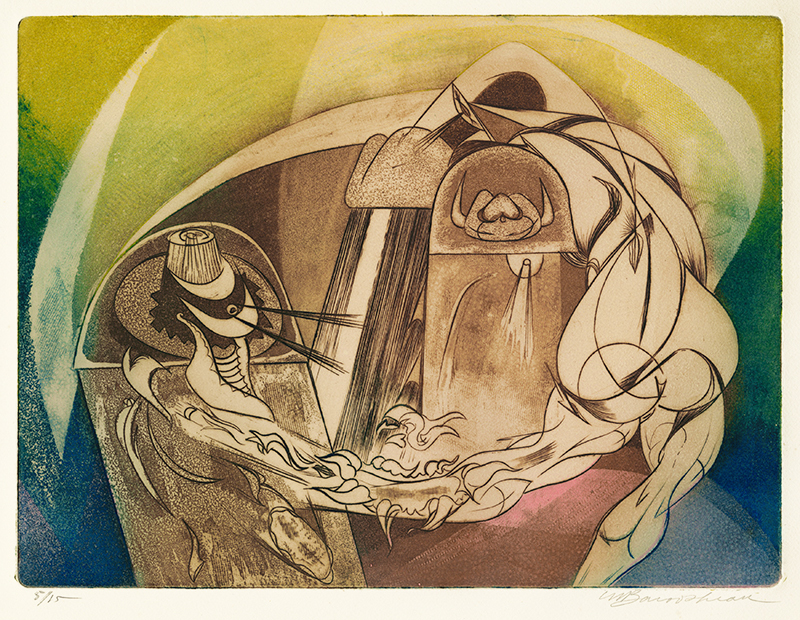
19th, 20th & 21st Century Fine Prints
707-546-7352 · fax 707-546-7924 · web: www.annexgalleries.com · email: artannex@aol.com
Apollo & Daphne by Martin Barooshian

Apollo & Daphne
Martin Barooshian
Apollo & Daphne
Martin Barooshian
1929 - 2022 (biography)In 1956, Martin Barooshian was in Paris and studied printmaking at Atelier 17 with S.W. Hayter. His early work was influenced by the Surrealists as well as Gauguin, William Blake, and Gorky and the Atelier's experimental, gestural approach to printmaking fit in with his personal abstracted explorations.
"Apollo & Daphne" was done at Atelier 17 using a combination of color engraving, aquatint, and soft-ground etching. The time spent at the Atelier resulted in his turning more to intaglio printing. After printing about 20 variant proofs in three states and after printing the bon a tirer he had to leave Paris and handed the finalization of the edition to fellow Atelier 17 printmaker and friend Kaiko Moti (East Indian/French: 1921 - 1989).
Barooshian's cataloger, Michael J. Russo comments on page 29 of "Martin Barooshian: A Catalogue Raisonné of the Prints 1948-1970":
"Barooshian advanced and adapted what he learned to suit his own abstract surrealist interest, innovating for more precision and complexity. He further incorporated aquatint and softground along with deep-bite etching in works like "Apollo and Daphne" to create his own unique printmaking advances..."
The myth relates the tale about the platonic love of the Greco-Roman god Apollo for the beautiful nymph Daphne. It is said that Daphne was the first love of Apollo but unfortunately she never responded his love. It was not usual or possible for a nymph or a mortal woman in the Greek mythology to resist to the love of a god, but Daphne did so and in fact, she lost her life trying to escape this love.
